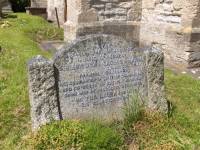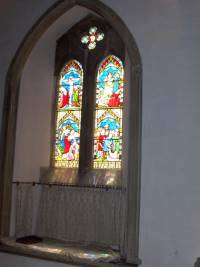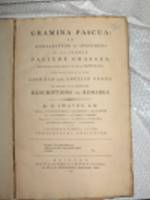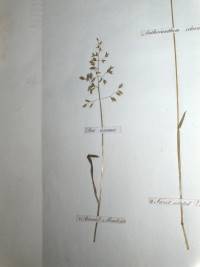|
The Pucklechurch community website |
|||||||||||||||
|
|
|||||||||||||||
|
|||||||||||||||
|
If you have signed up for emails and are not getting them please check the following: |
|||||||||||||||
|
It must seem to residents of the parish that things have gone quiet on Speedwatch since the public meeting last year. However, work has gone on behind the scenes to obtain a speed gun and to get Speedwatch up and running. At a recent committee meeting, Speedwatch Chairman Frank Rogers was presented with a speed gun by Cllr Sandra Grant on behalf of South Gloucestershire Council. This gun is for the use of Pucklechurch Speedwatch and its purchase was made possible by a decision made by the County Council to supply speed guns to similar groups across the county. The efforts of Cllr Grant and also Cllr John Calway of South Glos Council, who have worked hard to bring about this decision, are gratefully acknowledged. Pucklechurch Accompanied by the police, we have identified several sites across the parish where vehicles are known to regularly exceed the speed limit and where the speed gun can be used after risk assessments have been carried out. Assessments have been made on four such sites in the Pucklechurch area, and we are awaiting similar assessments to be carried out on a site on Shortwood Road between Police Station Hill and the top of Shortwood Hill. Shortwood We are waiting for a police risk assessment to be carried out on identified sites along Shortwood Main Road. The Next Steps Currently, we are costing the high-visibility clothing that all volunteers will have to wear when using the speed gun and pressing the police to arrange training of volunteers. We will be contacting a selection of those people who attended the public meeting last year to ask if they would like to become part of an operating team. We also need at least four volunteers from Shortwood to be trained for use of the speed gun. NOTE: Persons with disabilities are welcomed as team members but may be prohibited from operating the gun unless they can prove to the police assessor that they are able to move swiftly to a place of safety in case of danger. If unable to fulfil that criterion, there is still work within the team for disabled persons. As well as catching speeding motorists, the police have asked us to note down numbers of drivers who are using mobile phones at the wheel. So, drivers be warned! Frank Rogers, Chairman
We had a tremendous response on the Community Plan questionnaires. Somewhere between 60 and 70% of households responded. Well done, and a big thank you from the committee to everyone who took the time to complete a questionnaire and to the many volunteers who put in so much time and effort into the preparation, distribution and collection to make the survey so successful. There were over 1,900 questionnaires returned, of which about 700 of them are the shorter household questionnaires. More Help Needed Before we can use the results to develop the Community Plan, all the data collected needs to be analysed. The next step is to enter all the responses into the computer. We have some volunteers already working on the data entry task, but we really do need more help. If you have or anyone in your household has a PC with Microsoft® Access 2000 or later and can spare any time over the next month, please let Phil Look (937 3507) know. Data entry is very easy, mainly clicking boxes and buttons, with very little typing. Traffic One of the main areas of concern for our community is traffic. There were some items in the questionnaire, but more data is needed. The committee will be contacting South Gloucestershire Council to find out what can be done to gather data. This may include recording trips in, out and through the area and also a specific traffic survey to understand journey patterns. Phil Look & Martin Smith
Consumers now have another tool to help them identify potential scams that land on their doormats every day. £350 million is lost each year to these scams, according to research undertaken by the Office of Fair Trading recently. This latest tool is a series of interactive scam guides designed to highlight the tricks scammers use to lure their victims. There are three interactive guides available – a prize draw notification, a bogus lottery mailing and a fake clairvoyant letter. Each guide contains ‘pop up’ text highlighting the tricks used to convince people the letters are genuine. People receiving unsolicited mail can now check them for the kinds of tricks explained in the guides, or use them to show relatives and friends what to watch out for. The interactive scam guides can now be found at http://www.oft.gov.uk/oft_at_work/consumer_initiative/scams/scam-letters. Consumers wanting further advice on scams, or to request Scamwise leaflets and door stickers, can contact Consumer Direct on 08454 04 05 06.
Community Plan Special Thanks… …to our Community Plan questionnaire collectors who went out and knocked on every door in Pucklechurch, Shortwood, Lyde Green and Parkfield. In many cases, they visited houses three and four times to obtain the household and the individual questionnaires. They found the people of our parish ready to smile and help. Everyone who took part in the collection enjoyed it. As one of the volunteers remarked, “I spoke to neighbours I hadn’t spoken to before and visited places I didn’t know existed.” Over 190 people filled in the last page of the Community Plan questionnaire to offer help or get involved in community activities. So far the following meetings have been arranged:
Alan Holder
That Pucklechurch sits in a wonderful historic and ancient landscape goes without saying, but there are also parts of its history tucked away just waiting to be revealed to a wider audience… and sometimes, as I found, it’s revealed when you least expect it! Whilst wandering around the churchyard (on a mission for a family historian in Australia), I came across a monument with a tantalising inscription. It read:
So what exactly was the connection between this man and Pucklechurch? My curiosity led me on a journey of discovery which revealed not only the exploits of Sir Eric but introduced me to a published author, a royal chaplain, and a Victorian lady traveller, all of whom are related and buried next to each other in our churchyard.
In 1790 he published what is now an extremely rare and highly unusual book entitled "Gramina Pascua: or a collection of specimens of the common pasture grasses, arranged in the order of their flowering, and accompanied with their Linnæan and English names, as likewise with familiar descriptions and remarks." This book contains real dried specimens of common pasture grasses which may have been cultivated by Swayne himself and possibly collected and dried by his daughters. Only a very few copies appear to have survived, and one of these is held by Bristol City Museum. This is an important work, as it was the first treatise on pasture grasses for agriculture and calculated to spread knowledge of them amongst farmers and gentlemen. The Rev George was a keen and knowledgeable Sir Eric was the Rev. George Swayne’s great grandson. He is buried next to his father, George Carless Swayne and his brother, George Gustav. Sir Eric’s father, studied at Corpus Christi College, Oxford, where he became a fellow and, by 1850, Senior Dean. Judging by the learned publications he produced, his first degrees must have been in the classics, but in 1851 he became a Bachelor of Divinity. After his marriage to Margaret Eagles in 1855, he seems to disappear from British records. George and Margaret’s first son, George Gustav Carless Swayne was born in 1855 at the Rectory in Perivale, Middlesex. Like his father before him he was given the forename Carless and the family tree reveals a pattern of bestowing the mother’s maiden name as such. Carless was passed down like this through the family for generations. It stemmed originally from Colonel William Carless, reputedly one of the Royalists responsible for hiding Charles II in the “Boscobel Oak” after the Battle of Shrewsbury. That George Carless’s mother Martha ended her days living at Boscobel House in Clifton, Bristol, seems more than mere coincidence and must have reference to family history. Unfortunately George Gustav died in tragic circumstances whilst in Pucklechurch on 8th January 1858. The cause of death was recorded by the local coroner as “suffocated by the turning of certain bed-furniture”. One can only imagine the circumstances. Sir Eric John Eagles Swayne was educated abroad and attended Royal Military College at Sandhurst as Gentleman Cadet for a year in 1882 until he joined the Welsh Regiment and later the Indian Staff Corps. He had a distinguished military and diplomatic career serving in India and Africa, particularly in the Burma Campaign (1885-7), the African Campaign (1898) and in Somaliland. His rise through military ranks and diplomatic appointments can be traced through entries in the London Gazette: by 1901 he was in command of the Somaliland Field Force and was later Commissioner, Commander-in-Chief and Consul General of the Somaliland Protectorate. He led four expeditions there including one against Sheikh Haji Mohamed bin Abdullah Hassan, who has been demonised in British imperial history as "the mad mullah of Somaliland" for his opposition to colonial rule. Between 1906 and 1913 he was Governor of the British Honduras, receiving his knighthood on the occasion of “His Late Majesty’s Birthday” in June 1910, Edward VII having died the month before. He performed several roles during the First World War including being Assistant Inspector of Recruiting, and he eventually retired as a Brigadier General with a military C.B.E. in 1919 and died in 1929. The only female member of Swayne family for whom I have found a legible tombstone in Pucklechurch is Frances Louisa Swayne, Sir Eric’s first cousin. Her history is possibly also one of the most adventurous and intriguing for a woman living in Victorian England. Frances was the daughter of an eminent physician Joseph Griffiths Swayne, a pioneer in anaesthetics, an obstetrician and researcher into the cause of cholera. She appears to have been very well educated and in 1881 was working at the University of London. As a woman of independent financial means, she also travelled, and given the family connection with Somaliland, she went to Africa. She published memoirs of her visit in 1907, entitled “A Woman’s Pleasure Trip in Somaliland,” which included her own photographs and accounts of sights not normally noted. Copies of this book are now rare and very valuable, currently selling for between £200-£500 in specialist bookshops. In a letter accompanying one of these, she wrote “I always consider the time I spent in Somaliland was the most interesting, if not the happiest, part of my life, and fearing to lose the impression of that time I jotted down the little incidents of my stay, while they were quite fresh in my mind” My journey through the Swayne family tree has bought me into contact with so many wonderful characters, it’s impossible to write about them all here, there’s a another explorer and big game hunter, a chess champion, several Bishops, and a spymaster, to name but a few! What I hope I have done is help to illuminate a little bit of village history that’s been forgotten. As for more research I’ve even been in touch with a living descendant of the Rev George who has family papers for me to look at….but that’s another story! Gail Boyle
Flooding and Sewage Problems Plague Village More intense and frequent storms are highlighting the problems with the sewer and surface water systems in Pucklechurch. While we must be thankful that our position on the top of an elevated plateau means we are not subject to the terrible flooding experienced in other parts of the country, it is still unpleasant when sewage spews from manholes or water floods the streets and enters homes and businesses. The Parish Council are well aware of these issues and want to ensure that the relevant authorities take appropriate action. To understand what is happening and how it can be fixed requires some background information. There are two separate wastewater systems in the village. The sewer system handles sewage (plus other waste water from properties), and the surface water system carries runoff from streets and other paved areas. The sewer system is the responsibility of Wessex Water, while South Gloucestershire Council manages the surface water system. These two systems work by gravity. Both the sewer and surface water systems flow down to Feltham Road. Surface water is discharged into a ditch on the north side of the road, just past the entrance to Marsh Farm, and then flows into Feltham Brook. The sewer system runs from Feltham Road to the treatment plant at Locks Bottom. Under normal conditions both systems can cope with the flows generated. However, during periods of intense rainfall, problems surface… literally. When a pipe carrying liquid gets full, it causes water to back up in the pipe. The weight of this backed up water creates pressure, which is called "surcharging" the pipe. The pressure can become so great that it lifts manhole covers and lets the contents of the pipe spill out. During severe storms, this currently happens to both the sewer and the surface water systems at various points in the village. Let's consider the sewer system first. Unfortunately, our sewer system does not handle only sewage. Older developments in the village combine rainwater (from gutters, for example) and sewage. In newer developments, sewage and rainwater are segregated by design, but it is still common practice (although not approved) for people to connect the gutters from new extensions into the sewer. This means that the flow in the sewer system increases during a storm, the pipes surcharge, and raw sewage spills into the street. The problem is not limited to the village. The sewer pipe that follows Feltham Road to a point near Marsh Farm then crosses Marsh Farm and Churchmead Farm to the treatment plant at Locks Bottom. This pipe across the farmland also surcharges and causes problems. In addition, there is a "consented" discharge into Feltham Brook via the ditch on the north side of Feltham Road. This means that Wessex have permission from the Environment Agency to discharge sewage into this ditch and from there into Feltham Brook. Wessex estimates that this happens over 25 times a year. Now let's turn our attention to the surface water system, which also surcharges during times of intense rainfall. Manholes pop open and water shoots into the air, streets turn to rivers and there is standing water in several locations. All this eventually ends up in Feltham Road and flows into the same ditch that Wessex uses to discharge sewage. This means that when the ditch in Feltham Road floods, it is likely be at a time when sewage is also being discharged into the ditch. The Parish Council have met with the engineers from Wessex Water on two occasions to understand their proposals to upgrade the sewer system. Several concerned residents also attended the last meeting held on 7th August. Wessex Water has provided the following summary of the proposed improvements:
There have been problems with sewage in other areas (such as Maple Walk, Partridge Rd/Hawkridge Dr and Oaktree Ave), but these are not in the Wessex Water 'at risk' register and have not been addressed by this scheme. Every household troubled by an incident should call Wessex Water (see box) and report the problem, as Wessex prioritise problems based on the number of calls received. The Parish Council have also requested a meeting with South Gloucestershire Council to discuss surface water problems. SGC were unable to be at the August 7th meeting and a meeting date had not been fixed at the time of writing. It is clear that urgent attention is needed to reduce the incidence of sewage spilling onto streets and farmland. The proposal from Wessex will significantly reduce the incidence of sewage spills but will not eliminate them. The Parish Council remain deeply concerned that the proposal does not go far enough and are investigating how it can be improved.
Field Boundaries Project South Gloucestershire Council and the Bristol Regional Environmental Records Centre (BRERC) are working in partnership to survey all the hedges within the Parishes of Pucklechurch, Siston, and Westerleigh. Each year more and more hedges are destroyed or lost due to poor management, and with ever-increasing demand for development around the Bristol North fringe, it has never been more important than now to find out how many hedges we have left and what condition they are in. The survey will assess the condition and find out how many different types of hedgerow trees and shrubs are present and give us more information about the variety of animals and plants present. The information collected will then be digitised onto a computer-based mapping system, making the information easily accessible for use by ecologists, planners, and anyone who cares for the future of our natural heritage. Such information will help protect important hedgerows in the development control process and inform us where scarce resources can be used to greatest effect. Hedges are important from an historical context, as some have been present for centuries and many form important features such as parish boundaries. As there are hundreds of hedges, we still require help from volunteers to complete this task. One training day has been held where 25 volunteers received practical tuition on how to carry out the survey. However, as there are so many hedges, anyone wishing to help out, can still take part. No expert knowledge is required, as all training can be given in basic identification skills and use of the forms. Carrying out the survey will help us to protect these important wildlife and historical features and is a fun way of getting out and about and discovering the wealth of wildlife near where you live. For further information on how you can help, please contact either BRERC on 0117 934 9833 or Stuart Bardsley at South Gloucestershire Council on 01454 863468.
Meet at Pucklechurch Community Centre
Join us on a walk around Pucklechurch. We will visit some lovely countryside and explore quiet lanes and byways, some with fantastic views. As usual, it will be an informal and friendly walk with tea, coffee and biscuits to refresh mind and body at the end. Our dedicated team of walk leaders will lead you round the route and can answer any queries or concerns that you have. This walk covers mostly even ground, but there are a couple of more challenging sections! We will walk for about an hour and cover about 3.5 miles. You can just turn up on the day, but if you would like any further information about this and other walks in our Winter Walks Programme, please do not hesitate to contact the Walking to Health team on (01454) 866598 or email Christine.Farr@southglos.gov.uk.
|




